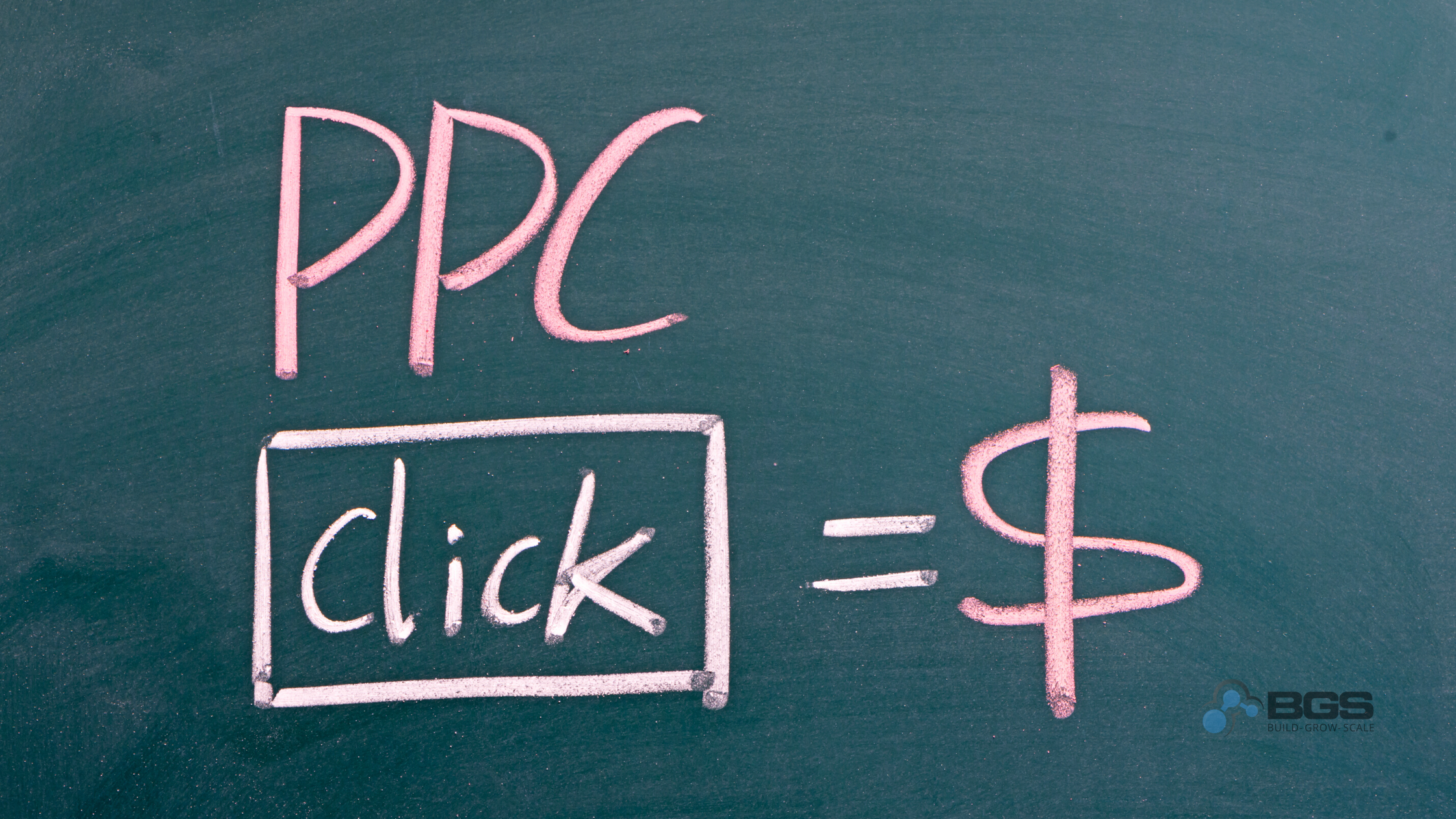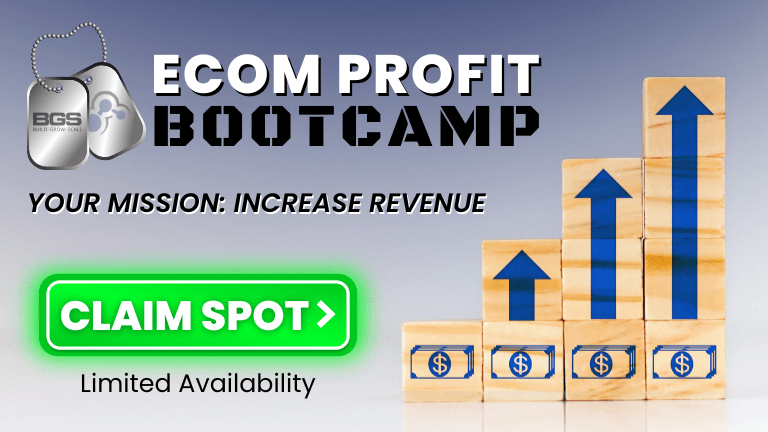Pay-Per-Click Marketing for Ecommerce

Pay-per-click (PPC) marketing is a powerful tool that can skyrocket your online visibility and sales. In fact, some would consider it a necessity for any online business. And that’s precisely why we’re going to cover various aspects of the topic in this article. Everything from different types of PPC ads to teaching you how they work to figuring out which ones are best for your business.
So, let’s dive in!
What Is Pay-Per-Click?
In the realm of digital marketing, you’ve likely heard of “Pay-Per-Click” (PPC), a model that enables marketers to pay a fee each time one of their ads is clicked. Essentially, you’re buying visits to your site rather than attempting to earn them organically. The appeal? You only pay when your ad is clicked, giving you a direct measure of effectiveness.
Strategically, pay-per-click marketing can be a game changer. When deploying a PPC campaign, you’re able to target specific demographics, like location or language. You can also schedule your ads to appear at optimal times. This precision targeting can significantly boost your return on investment (ROI).
But it’s not just about setting up ads and expecting results. Analyzing data is a crucial part of any PPC campaign, and you need to constantly monitor and adjust your strategy based on the data you gather. How many clicks are you getting? What’s the average cost per click? Are you seeing conversions from those clicks? These are all key questions your PPC data can answer.
How Does PPC Marketing Work?
To gain a better understanding of how this marketing model works, let’s break it down into four main steps:
- First, you’ll need to choose relevant keywords for potential customers to find your products. Use analytical tools to identify the most effective keywords based on search frequency and relevance to your ecommerce business.
- Second, you’ll create an advertisement that includes these keywords. When users search for your chosen keywords, this ad will appear on search engine results pages (SERPs).
- Third, you’ll bid on your chosen keywords. This is a competitive process, as you’re bidding against other advertisers who want their ads triggered by the same exact keywords. Your ad’s position on the SERP is determined by your bid amount, the quality of your ad, and other factors.
- Lastly, you’ll pay the search engine every time a user clicks on your ad. Hence, the term “pay-per-click. However, the return on this investment can be significant, as each click signifies a potential customer showing interest in your product.
Types of PPC Ads
From search to remarketing, understanding the types of pay-per-click ads can help you harness their potential to drive traffic and conversions.
Let’s analyze in detail how these ads function …
Search Ads
Among the numerous types of PPC ads, search ads often deliver the most direct impact on your ecommerce marketing efforts. They appear when potential customers are actively searching for products or services you offer, making them highly targeted.
Strategically, search ads allow you to reach customers in their purchase-ready moments. They’re data-driven, with success measured by clicks, conversions, and return on investment. Analyzing this data allows you to optimize your bids, keywords, and ad copy for maximum impact.
A well-crafted search ad campaign can increase your visibility, drive traffic to your site, and boost sales. But it’s a competitive landscape, so to outperform your competitors, you’ll need to monitor your campaign’s performance and make data-driven decisions constantly.
Video Ads
While search ads play a crucial role in your ecom marketing strategy, don’t underestimate the power of video ads, another effective type of PPC advertising.
Video ads can drive high engagement rates, given the visual and auditory stimuli they provide. According to a report on video advertising, they have a click-through rate (CTR) of 1.84%, the highest among all digital ad formats.
By incorporating a compelling call to action, you can leverage this high engagement to drive conversions. Moreover, strategic placement of video ads on platforms like YouTube can further boost your reach.
However, it’s crucial to analyze your target audience’s behavior, platform preferences, and viewing habits to optimize your video ad strategy. Remember, data-driven decisions are key in PPC advertising.
Social Ads
Turning your attention to social ads, another essential part of PPC advertising, you’ll find they offer a unique and effective way to reach your ecommerce audience. Given the vast user base of social media, investing in these ads can be strategic. Analyzing the data at your disposal is crucial to determining which platform suits your brand best.
Facebook’s broad demographic reach and detailed targeting options make it a popular choice. With its visual appeal, Instagram works well for lifestyle and fashion brands. LinkedIn, on the other hand, is ideal for B2B marketing. By studying engagement rates, click-through rates, and conversion data, you can optimize your social ads for maximum ROI.
Ultimately, when used correctly, social ads can drive significant growth for your online store.
Remarketing Ads
In your ecom journey, remarketing ads can be a powerful tool to re-engage visitors who’ve interacted with your website but haven’t yet purchased. These ads track your site’s visitors, serving them targeted ads on other platforms to draw them back to your store.
There are two main types: static and dynamic remarketing ads. Static ads show the same ad to all users, regardless of their behavior on your site. Dynamic ads, on the other hand, tailor the ad content based on a user’s interaction with your site.
Data-driven analysis can help you decide which type best suits your business’s strategy.
Display Ads
Another potent type of PPC advertising that can expand your ecommerce reach comes in the form of display ads. They’re visual banners or graphics that appear on websites, apps, or social media platforms, and they are extremely effective at increasing brand visibility and driving traffic to your online store.
Strategically, you should consider your target audience’s browsing habits when creating display ads. Data analysis shows that targeted display ads significantly increase click-through rates, so it’s essential to use data-driven strategies to optimize your ads.
For instance, A/B testing multiple versions of your ads can help identify which ones resonate most with your audience. In addition, analyzing data from previous campaigns can guide your future ad creation, ensuring that every click counts.
Google Shopping Ads
This type of PPC ad shows users a photo of your product, a title, price, store name, and more. By providing rich product information directly in your ads, you cut down on unnecessary clicks and ensure that only genuinely interested customers land on your page.
Google Shopping Ads also have a wider reach, as they appear in search results, the Shopping tab, and even Google Images. According to a Google study by Merkle, shopping ads convert 30% higher than comparable text ads.
Amazon PPC Ads
While Google Shopping Ads can significantly boost your ecommerce visibility, you shouldn’t overlook the potential of Amazon PPC Ads in your digital marketing strategy.
They offer a compelling way to showcase your products to millions of potential customers. There are three main types: Sponsored Products, Sponsored Brands, and Product Display Ads. Each has its unique benefits and targeting options, allowing you to strategically position your ads based on keywords, product categories, or customer interests.
Determining Which PPC Ads Work Best for Your Business
You need to consider several key factors to pinpoint which PPC ads will bring the most value to your ecommerce business.
First, you’ve got to analyze your target audience. Who are they? What do they want? Once you know that, you can tailor your ads to appeal to them specifically.
Next, you should evaluate your competition. What PPC ads are they using? How successful are they? You can use tools like SEMrush or SpyFu to gather this information.
Don’t forget to consider the cost of your PPC ads. You’ll want to calculate your return on ad spend (ROAS). This will help you understand whether your ads are profitable.
Finally … test, test, test! Try out different ad formats, keywords, and bidding strategies, and use Google’s A/B testing tool to compare the performance of different versions of your ads.
Benefits of PPC Advertising for Ecommerce Businesses
One major benefit of PPC advertising for your ecom businesses is increased visibility and brand exposure. With PPC campaigns, your ads are displayed prominently on search engine results pages, ensuring that your brand is seen by potential customers who are actively searching for products or services related to your business.
This increased visibility helps drive targeted traffic to your website and creates brand awareness and recognition. Additionally, PPC allows you to target specific keywords, demographics, and locations, ensuring that your ads are reaching the right audience at the right time.
This targeted approach not only maximizes the effectiveness of your advertising budget but also increases the chances of converting leads into customers.
Wrap-Up
In your ecommerce journey, PPC marketing can be a game changer. Understanding it, knowing its types, and determining what suits your business best is important.
Always analyze data, adjust your strategies, and reap the rewards. And remember, successful PPC isn’t about spending more—it’s about spending smart.
So keep exploring, testing, and optimizing, and watch PPC marketing bring you closer to your customers and business goals!
Resources
Lupis, J. (2017, July 24). Google PLA conversion rates are 30% higher than comparable text ads on desktops. Marketing Charts. https://www.marketingcharts.com/digital/paid-search-79142
Shukairy, A. (2015, February 10). The state of online video advertising – statistics and trends. Invesp. https://www.invespcro.com/blog/online-video-advertising/
Frequently Asked Questions
What types of PPC ads are there?
There are several different types of PPC ads: video ads, Google Shopping ads, social ads and search ads.
How much does it cost to run a PPC campaign?
Running a PPC campaign for your ecommerce store can vary in cost. It depends on factors like your industry, competition, and campaign goals. Setting a budget and monitoring your campaign is important to ensure it’s cost effective.
How can I track the success of my PPC campaigns?
To track the success of your PPC campaigns, use tracking tools like Google Analytics. Monitor metrics like click-through rate, conversion rate, and return on ad spend to assess campaign performance and make data-driven optimizations.




